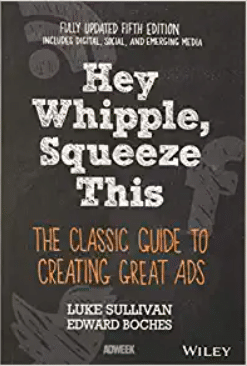
When constructing an advertising narrative, always ask yourself: what parts of this story can’t be questioned?
As in, what will the audience never think to question?
The right answer to this question will become your key to crafting market-dominating advertising.
Because the parts of a story that can’t be questioned are those parts necessary to even understand what’s going on inside the story.
In other words, in order to make sense of the characters’ actions and dialogue, what do I have to accept as a given?
And the key is to bury your persuasion within those “givens”
This is a hard concept to explain in the abstract, so let’s use the legendary Mr. Whipple Campaign as an example, starting with the very first commercial:
Now that you’ve seen the ad, ask yourself:
What must we assume to be true to make sense of the scene being acted out before us?
The two givens that I’ve come up with are:
- That squeezability of toilet paper is correlated to softness.
- That just as shoppers squeeze tomatoes for ripeness, some shoppers also squeeze toilet paper for softness.
If you don’t assume those two things, at least temporarily, then you can’t make sense of the drama unfolding before you.
And as a human, you MUST make sense of that drama.
As a social species, we are in danger if we can’t understand the social interactions around us. So figuring those out is a survival instinct.
Yes, this applies just as much to social interactions witnessed through mass media.
So you can make fun of the ad and scoff at a shopkeeper stupid enough to scold his customers…
Or deride how ridiculous it is for that same shopkeeper to compulsively squeeze the Charmin himself…
But you’ll never think to question those two core assumptions.
You’ll still assume that squeezability equals softness.
And, after watching so many shoppers squeeze the Charmin, you’ll inevitably end up squeezing the damn stuff yourself.
Part of it’s “monkey see, monkey do” and quite a lot of it’s satisfying your curiosity while sticking it to Mr. Whipple, a la reverse psychology.
And that’s the moment many shoppers became Charmin customers — cause it really is squeezable, and — according to the ad’s own logic which we swallowed whole — therefore “must” be soft.
Persuasion accomplished.
What Imagery Can’t Be Discarded?
As I wrote previously, there’s no free parking on the dance floor of your mind.
The mental images you form while constructing a narrative are necessarily placed in the “true” category while you’re engaged with the story.
You might later decide the story is false or biased and you might forget about the story, but the images will remain in your imagination.
And your imagination will still count them as “true.”
This is why push-polling works.
The only defense for this is to construct a counter-narrative.
When it comes to narrative and mental images, you can’t erase, you can only displace.
So think about this phenomenon as it relates to Mister Whipple: what images do those ads leave you with?
- Images of shoppers squeezing Charmin
- Images of Mr. Whipple scolding customers with “Please don’t squeeze the Charmin”
- Images of Mr. Whipple secretly copping a squeeze himself
- The mental image of squeezing Charmin as some sort of illicit pleasure
Again, you can consciously discount that imagery as stupid advertising schtick all you want, but those images are still in your head, and still influencing you.
But Did it Work?
Unquestionable assumptions and indelible imagery are incredibly powerful (and advanced) persuasive techniques.

So, yes, they worked and worked big time.
Immediately following the launch of the Mr. Whipple campaign Charmin displaced Scott as the #1 brand of toilet paper in America. And it remains so today.
Plus, the campaign was able to run unchanged for twenty one years and 500 ads, causing Mister Whipple to become a pop culture icon.
For perspective, according to a survey from 1976, more Americans could recognize Mister Whipple than President Jimmy Carter.
And yet, most advertising creatives dislike these ads? Heck, one highly respected creative even wrote a book panning the campaign.
Why?
Because they’re corny.
And because the techniques you just learned are rarely taught anywhere else but here.
How Does Your Advertising Stack Up?
Do your ads bury key persuasive elements in the pre-text of the story?
Do they create powerful persuasive imagery that can’t be discarded?
Is your current campaign capable of running for decades?
Can it make you — or your spokes-character — famous?
If not, you might want to bring your branding game to the next level.
- Getting a Foot in the Door — Of Perception - November 27, 2025
- What Digital Superstars Know About Offline Advertising - November 17, 2025
- Unmistakable: A Tale of Two Boots and Branding Done Right - November 8, 2025
